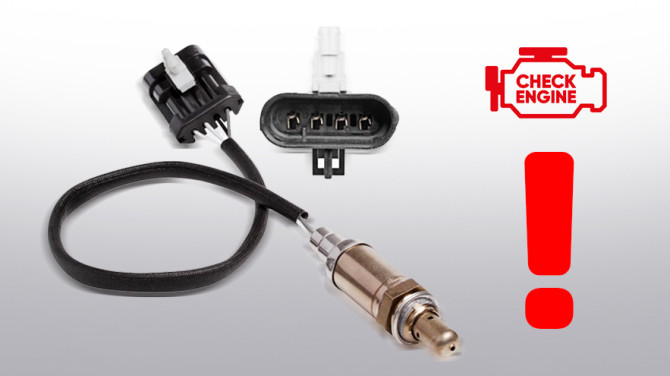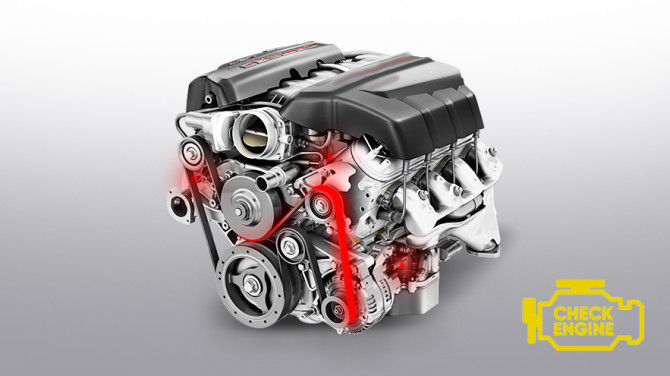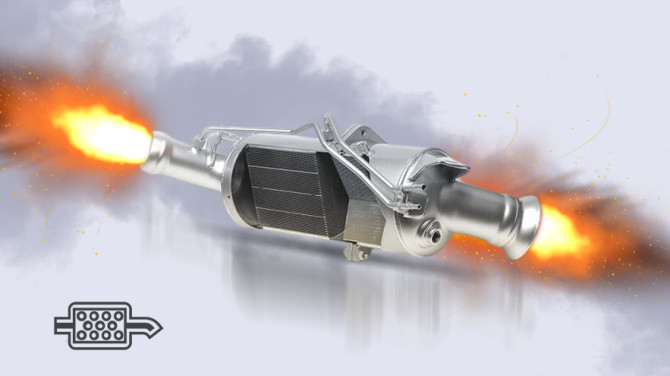Types of EPC steering rack torque sensors
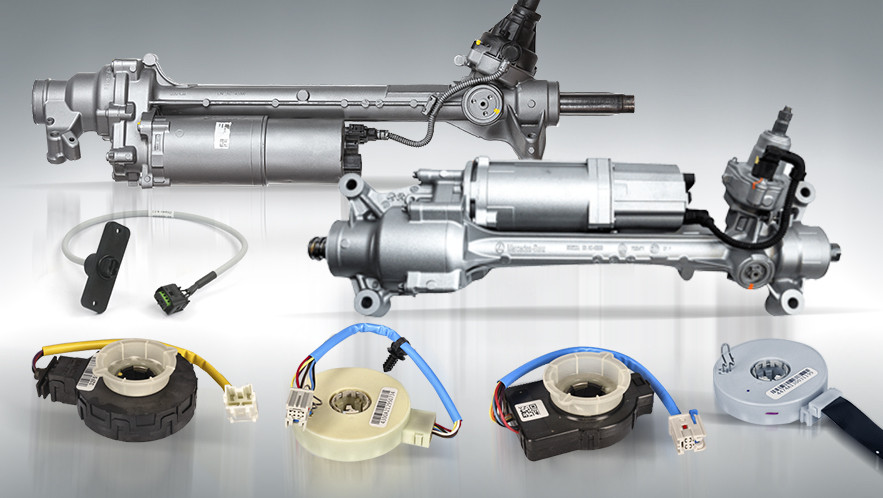
How important it is to have not only a serviceable, but also a light steering mechanism, says one curious story. In the 70s of the last century, when the USSR left Vietnam, it left a lot of equipment, including cars, as a parting gift. The war-weary and hungry Vietnamese drivers had to take helpers – it was very difficult to turn the steering wheel of lorries «ZISov» and «GAZ» alone. However, the design of the vehicle is constantly improving. Today, hydraulic and electric power steering helps to turn the steering wheel.
EPS device
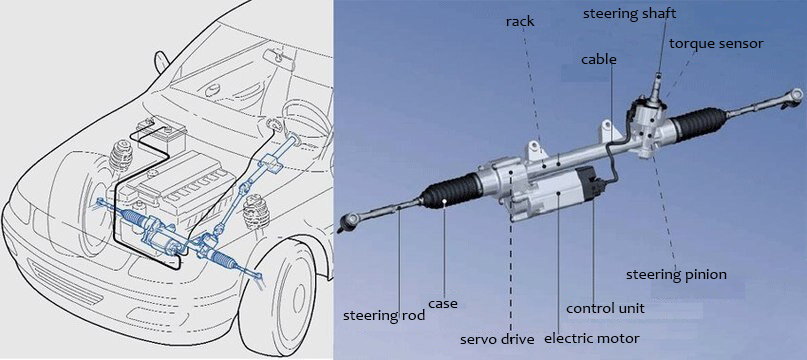
Unlike live assistants, there's no need to ask the EPS for help or even activate it with a button. The EPS control unit always knows how much force to apply to the rack – the data is provided by the steering shaft torque sensor. Its other name is – torque sensor, and it is the main measuring device of the steering system. In some designs, it can be combined with a steering angle sensor, but this does not change its basic function.
Most often the torque sensor is built into the steering column. Its steering shaft and pinion shaft are connected with each other by a torsion – a rod with torsional stiffness. The principle of operation of the sensor is based on measuring the torsion angle of the torsion, which is proportional to the torque on the steering wheel. As this angle is very small, the measuring range of the sensor is only 4-5° to each side. This places high demands both on the measuring accuracy of the device and on the reliability and quality of its manufacture.
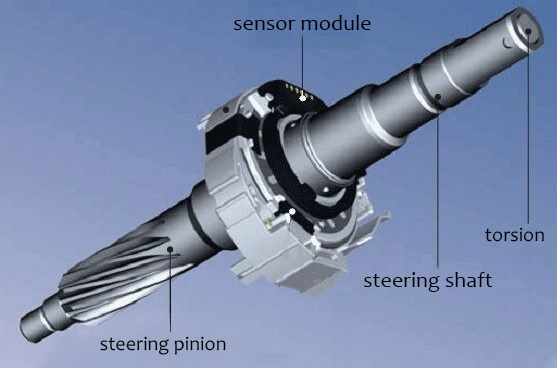
Sensor varieties
There are many variants of electric power steering units. Including distinguish several varieties of torque sensors. The main ones are:
Contact (resistive)
The principle of their operation is based on the change in electrical resistance when the sensor is deformed by torque. For this purpose, potentiometers or other elements with variable resistance are used. Due to the simplicity of design and low cost, such torque sensors (most often resistive potentiometric) were used mainly in early models of cars with electric steering racks. These are, for example, the first generations of popular budget cars
- Toyota Yaris
- Nissan Micra
- Chevrolet Spark
- Fiat Panda
- Peugeot 206
- Renault Clio
as well as Russian-made cars. With the development of technology, most car manufacturers have gradually switched to more modern contactless solutions.
Hall sensors
The non-contact torque sensor, based on an effect discovered by physicist Edwin Hall, is considered the most common. They utilise the phenomenon that a transverse voltage is generated in a conductor or semiconductor with a current if it is in a magnetic field. The magnet is mounted on the steering shaft and the sensor detects changes in magnetic flux when torque is applied. Often, in order to increase sensitivity and improve measurement reliability, a steering resistance torque sensor contains two Hall sensors.
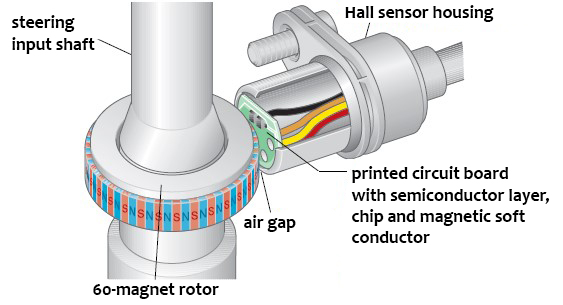
Because this type of sensor can be easily integrated into steering systems without significantly increasing their size, they are used extensively by leading steering system manufacturers such as Bosch, ZF, Nexteer and JTEKT, as well as in Volkswagen, Renault, Toyota, Hyundai and many other vehicle brands. They are ideal for mainstream and premium vehicles, providing reliability and precision in a compact and cost-effective design.
Inductive
They work on a similar principle of changing inductance, which causes a metal object to move. They use inductance coils that create an alternating magnetic field. But unlike Hall sensors, where changes in angle or force create variations in the magnetic field that are converted into an electrical signal, here the signal is measured based on the electromagnetic response. Inductive sensors are more resistant to strong vibrations and interference, and are less affected by temperature and external electromagnetic fields.
These torque sensors are most commonly used in mass-market and budget segment vehicles where low cost, reliability and simplicity of design are important. They are integrated into steering systems by leading automotive OEMs such as:
Torque sensors are most commonly used in mass-market and budget segment vehicles where low cost, reliability and simplicity of design are important.
- Bosch
- ZF
- TRW
- Nexteer
- Valeo
- Continental
Actively apply this technology in their systems in PSA Group cars, in steering systems of mass segment models of Volkswagen: Polo, SEAT Ibiza, Skoda Rapid, in budget EPS systems for Toyota and other Japanese brands.

Magnetoresistive
The principle of their operation, like the previous two types, is related to the magnetic field, but here they use thin-film magnetoresistive elements that detect changes in resistance as the magnetic field changes. This allows small changes in torque to be measured more accurately. Magnetoresistive sensors are more compact than inductive or Hall sensors and are more sensitive and accurate.
Magnetoresistive sensor systems are used in both mass-market and premium cars, in column, rack and pinion and shaft electric power steering (EPS) configurations. Specifically, VAG vehicles (Volkswagen, Audi, Skoda and SEAT) use magnetoresistive sensors in EPS systems developed by Bosch and ZF. GM uses magnetoresistive sensors in steering systems of its own design (e.g., for the Chevrolet Malibu and GMC Terrain) and in systems supplied by Nexteer EPS. Other manufacturers include Toyota, Hyundai/Kia, BMW and Volvo Trucks.
.jpg)
Tensometric
They use the principle of measuring mechanical strain using strain gauges (strain gauges), usually attached to the steering wheel shaft. When a torque is applied, the shaft deforms, which causes a change in the electrical resistance of the strain gauges. They are not affected by magnetic fields, but are sensitive to mechanical damage and can be affected by temperature, dirt and corrosion. At the same time, they provide a high signal linearity and are generally very accurate as they measure mechanical strain directly.
They are used in premium, sports and commercial vehicles as well as in autonomous driving and ADAS systems. Leading component manufacturers such as ZF, Bosch and JTEKT integrate these sensors into their steering systems (Servotronic, Active Steering, Direct-Steer and others) to achieve high accuracy and reliability.
These sensors are used in premium sports and commercial vehicles, as well as autonomous driving and ADAS systems.
Optical
These use LEDs and photo sensors to detect the angle or force of a turn. They detect the change in light output as mechanical parts move.
But optical torque sensors are less commonly used in the automotive industry than other types. The reason is that despite their high measurement accuracy, they are too sensitive to dirt, dust, humidity and other external factors. Their use is justified in certain vehicle categories:.
- hybrids (Nissan Leaf and Toyota Prius of the first generations);
- sports cars (Porsche 911, Audi TT);
- autonomous cars (Waymo (Google Car), early Tesla prototypes);
- commercial vehicles (Volvo buses);
Besides sensitivity, the limited application of this type of sensor is due to the high cost of manufacturing and maintenance, as well as comparable accuracy with less vulnerability to strain gauges and Hall sensors.
Torque Sensor Repair and Maintenance
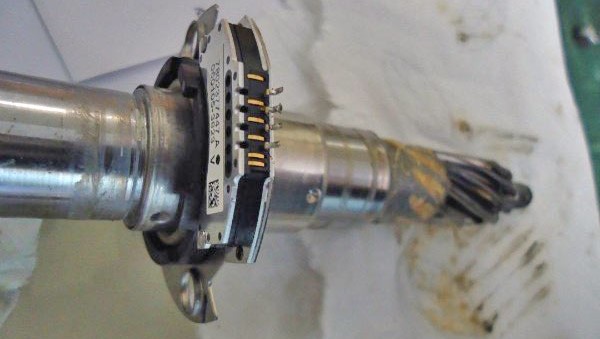
Sensor failures can be caused by:
- deformation of the steering shaft or other components associated with the sensor;
- damage of wires or connectors connecting the sensor to the control unit;
- software failure;
- external factors: ingress of water, dirt or corrosion of contacts.
All of these can lead to device malfunctions, which can be recognised by a number of symptoms:
- Changes in EPS behaviour. The steering wheel can become either too heavy or too light.
- Noises and vibrations. Extraneous sounds (e.g. buzzing or clicking) may occur when turning the steering wheel in place or when driving.
- Loss of return force. The steering wheel may not return to the centre position automatically when exiting a turn.
- Driver assistance systems malfunctions. Systems that depend on the torque sensor (e.g. adaptive cruise control, lane keeping) may not work properly or may be switched off.
- The steering wheel-shaped icon on the instrument cluster. It may be yellow/orange if the problem is of a warning nature, or red if there are serious problems in the EPS. On some cars where the EPS is integrated into the overall control unit, the Check Engine light will also illuminate.
This indication – the surest sign that the driver needs to contact a specialised workshop for diagnosis and repair. The following errors are usually detected when the diagnostic scanner is connected:
- C1500 – No torque sensor signal.
- C1524 – Incorrect torque sensor signal.
- U0126 – Loss of communication with steering module.
Although car and auto component manufacturers often advise replacing the steering assembly when the torque sensor fails, in most cases this can be avoided. Specialist vehicle service stations, such as STS, have extensive experience in rebuilding steering assemblies of any complexity.

To restore functionality of the torque sensor it is necessary to dismantle it from the steering rack and disassemble it. If inspection shows only signs of wear on the moving parts, the torque sensor can be reassembled and fitted to the rack and then calibrated.

But if that doesn't help, you don't have to buy a new unit anyway. At STS, we always have in stock remanufactured, fully serviceable steering racks from our own brand for all popular car models. Our customers receive a repaired unit, which is not inferior to the factory rack, and in terms of further repairability even surpasses it, at a price much lower than that of a new part.
